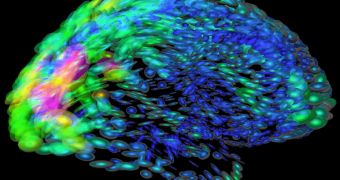Scientists have been trying to locate the source of creativity in the human brain for quite some time now, and steady progress is being made. While the issue remains far from resolved, a new study managed to discover that the process requires both brain hemispheres working together.
Usually, each task we perform activates one of the hemispheres more than the other. It's not very often that they work together as a team, since they much rather compete. However, this does not appear to be the case when performing more complex tasks and neural functions, including creativity.
Researchers at the University of Southern California (USC) were recently able to determine that even the left hemisphere of the human brain – known to be primarily involved in underlying math and logical thinking – was found to be involved in creative thinking.
Until now, scientists believed that the right part of the brain was more heavily involved in underlying spiritual and artistic thinking. Yet, even in individuals who see themselves as right-brained, the left hemisphere was found to be activated during the creation process as well.
“We want to know how does creativity work in the brain?” explains USC Dornsife College of Letters, Arts and Sciences assistant professor of neuroscience, Lisa Aziz-Zadeh. Left-brain activation patterns were found to exist in artists who were painting or sculpting.
The new study is not meant to suggest that the two halves of the brain play an equal role in underlying creativity. The right-hand side is always more involved when it comes to artistic pursuits, for example, but it always sends calls for help to the left hemisphere.
“We need both hemispheres for creative processing,” Aziz-Zadeh writes in a paper detailing the findings. The work appears in last month's online issue of the esteemed journal Social Cognitive and Affective Neuroscience.
USC graduate student Sook-Lei Liew and USC undergraduate Francesco Dandekar were also a part of the research team, and co-authors on the research paper. The team used functional Magnetic Resonance Imaging (fMRI) to analyze the blood flow in the brains of test subjects, as they were performing artistic tasks.
This type of MRI detects how many neurons in a certain area of the brain activate under certain conditions. This enables researchers to figure out which cortical regions are involved in underlying various types of processes, tasks and mental capabilities, PsychCentral reports.

 14 DAY TRIAL //
14 DAY TRIAL //